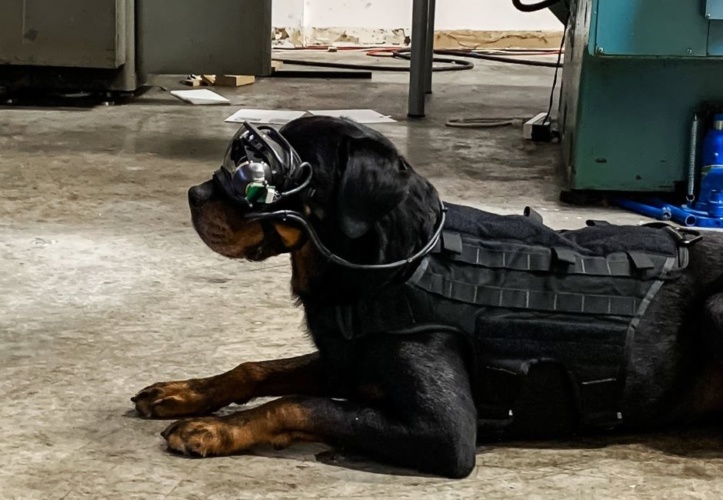
Military working dogs often search areas for explosives and hazardous materials and assist in rescue operations, but giving dogs commands can put the handler in harm’s way.
Now, through a project funded by the Small Business Innovation Research (SBRI) program and managed by the US Army Research Office, a new technology has been developed by Seattle-based Command Sight to provide military working dogs with augmented reality goggles that allow a dog’s handler to give specific directional commands while keeping remote and out of sight.
Dr AJ Peper started Command Sight In 2017 to bridge human and animal communication. The augmented reality headsets are specially designed to fit each dog with a visual indictor that allows the dog to be directed to a specific spot and react to the visual cue in the goggles. The handler can see everything the dog sees to provide it commands through the glasses.
“Augmented reality works differently for dogs than for humans,” said Dr Stephen Lee, an ARO senior scientist. “AR will be used to provide dogs with commands and cues; it’s not for the dog to interact with it like a human does. This new technology offers us a critical tool to better communicate with military working dogs.”
The initial prototype is wired, keeping the dog on a lead, but researchers are working to make it wireless in the next phase of development.
“We are still in the beginning research stages of applying this technology to dogs, but the results from our initial research are extremely promising,” Dr Peper said in a statement. “Much of the research to date has been conducted with my rottweiler, Mater. His ability to generalise from other training to working through the AR goggles has been incredible. We still have a way to go from a basic science and development perspective before it will be ready for the wear and tear our military dogs will place on the units.”
Currently, military working dogs are often directed by hand signals, which require the handler to be within sight of the dog, or by laser pointers, which also required the handler to remain close to the dog. Audio communications, using a camera and a walkie talkie placed on the dog, are also used to direct the canines and allows the handler to be further from the dog, but the verbal commands can confuse the dog. Augmented reality goggles could offer Special Forces dogs and their handlers a new alternative.
“Even without the augmented reality, this technology provides one of the best camera systems for military working dogs,” Lee said. “Now, cameras are generally placed on a dog’s back, but by putting the camera in the goggles, the handler can see exactly what the dogs sees and it eliminates the bounce that comes from placing the camera on the dog’s back.”
With additional funding secured, the researchers plan to spend the next two years developing a production level wireless product. Once they have a prototype they will get user feedback and revise the product for manufacturing.




Nanogenerator consumes CO2 to generate electricity
Whoopee, they've solved how to keep a light on but not a lot else.